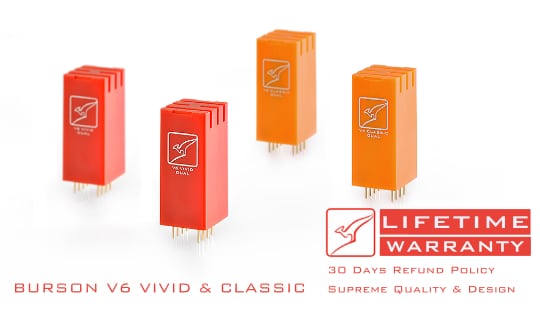
What’s Right About Discrete Circuits?
Discrete circuits are custom built by Burson for specific applications rather than an op-amp’s jack-of-all-trades-master-of-none specifications. The art of circuit design yields superior sound in every way in comparison to simple plug-a-chip engineering.
A system can only sound as good as its weakest link. All our products use thick, quality, temperature-stable printed circuit boards with high-purity copper traces and gold-plated soldering pads. And extra coating is applied to both sides of the PCB preventing oxidation. The boards are hand-built use high-spec metal-film resistors and other audio-grade parts using as few hand-matched components in the signal path as possible.
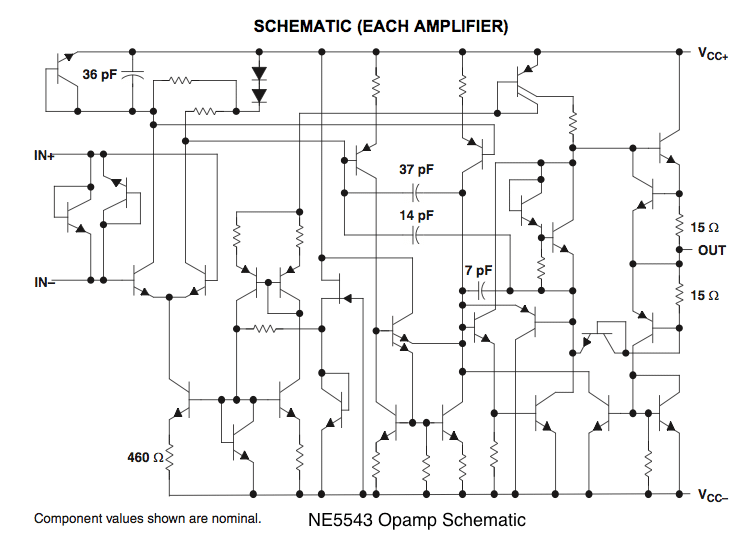
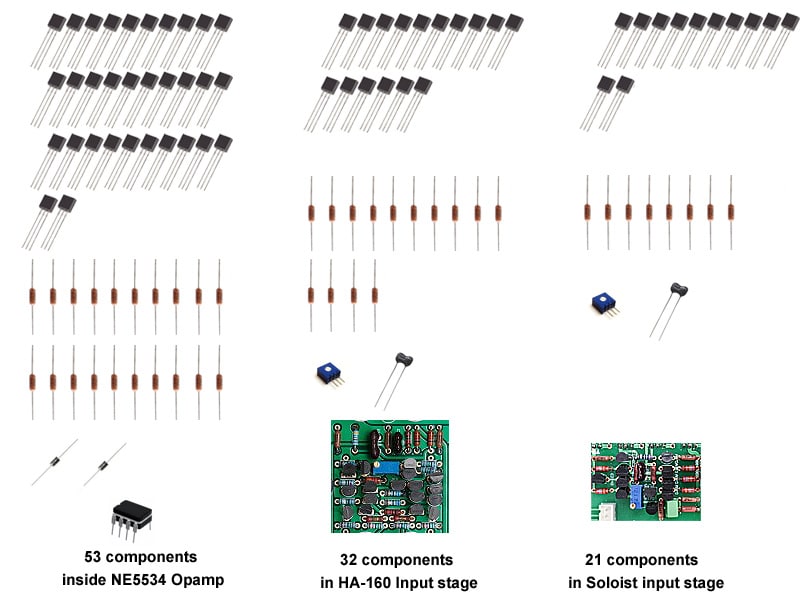
Advantages
- Custom circuitry depending on application
- Significantly reduces component count to better preserve signal integrity
- Component are top-quality audio-grade components
- 1%-matched metal-film resistors and silver mica capacitors
- Extremely temperature stable
- Each transistor is chemically optimized for its application: NPN or PNP
- Each transistor tested and matched before hand-soldering onto the PCB
What’s So Entirely Wrong With IC Op-Amps?
There is a common misconception among audiophiles: That is an Integrated Operational Amplifier (IC Opamp) is equivalent or even superior to a discrete design. Nothing can be further from the truth! Restricted by the fabrication process and technological limitation an IC Opamp is an inferior substitute for a proper discrete design. An IC Opamp is entirely constructed on a single dice of a silicon wafer, which is smaller than a grain of rice. Limited by its size and heat dispersion, it is impossible to incorporate a top-quality audio transistor like the A970, or K170 which feature in the Burson Audio discrete design. During the construction of a discrete transistor, a chemical optimisation process takes place for each piece of silicon according to its application (NPN or PNP). This optimisation process is critical to the performance of the final product. Some of the benefits include:
optimized for breakdown voltage and performance
optimized for near-true complementary
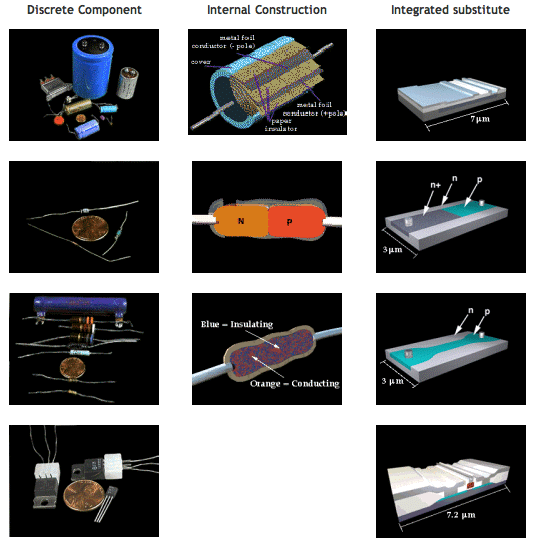
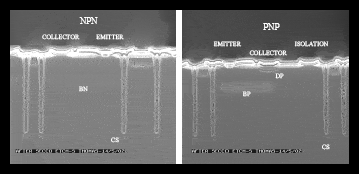
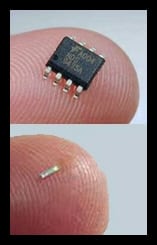
But this process can not take place on an integrated circuit since all transistors are fabricated on the same piece of silicon. This is one of the major drawn back of an integrated circuit compare to a discrete circuit.
All components on the silicone dice are formed by a droplet of chemical (very much like inkjet printer printing on paper). This fabrication process can not create parts like the 1% tolerant metal film resistor, or the super stable silver mica capacitor (please see table above to compare how discrete parts are different to their integrated substitute) Since they are all connected (hence integrated) they can not be individually tested and matched.
In an IC opamp the conductor layer that connects all the parts is formed by a layer of aluminium vapour that is thinner than the water vapour left on foggy windscreen. This poor conductor is the silent killer to musical texture.
The close proximity of components also poses a problem for audio signals, where that delicate signal that music lovers pursue, will be masked by EMI noise.
In the end, the consumer is getting an opamp that is built with a bunch of second grade parts that is unable to yield the best results, connected via a thin layer of aluminium foil.
An IC opamp is nothing more than a cost cutting substitute in audio application which we hate with a passion!
To learn more about the fabrication process of integrated Circuits please visit the following links:
“How Can We Create an Integrated Circuit from Sand?” Exploration 1B: Comparing Macroscopic and Microscopic Circuit Components by Melonie A. Teichert, Angelica M. Stacy, Alice C. Rico, Susan E. Kegley, Jennifer G. Loeser, Marco Molinaro, and Susan E. Walden. Applets programming by Cora Estrada and Toshiro Horie.Circuit images by Marco Molinaro, Susan Walden and Sue Whitmore.
(http://chemistry.beloit.edu/Chip/pages/macromic.html) “The History of the Integrated Circuit”
by Nobelprize .org (http://nobelprize.org/educational_games/physics/integrated_circuit/history/)
Reference: “Plasmas and Plasma-Surface Interactions” by Dr Paul May , University of
Bristol, Bristol BS8 1TS, UK “Integrated circuits” by Integrated Publishing, USA “Integrated circuit” Wikipedia, The free encyclopedia
